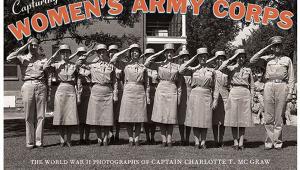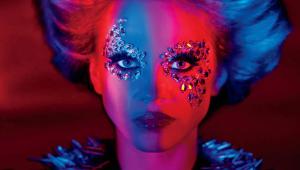Top Digital Books Of 2007; More & Better Digital Imaging Books
"From the moment I picked up your book until I laid it down, I was convulsed
with laughter. Some day I intend reading it."
--Groucho Marx
According to a recent Associated Press-Ipsos poll, one in four adults read
no books in the past year. Of those who did read, women and older people were
the most avid readers and their top choices were religious works and popular
fiction. The average person claimed to have read four books in the last year.
Excluding those who hadn't read any books, the typical number of books
read was seven. Yet you would never know that by the stacks of really good digital
imaging books that were produced in 2007 and I'm gonna stick my neck out
and introduce you to the best.
The Crème De La Crème
The Secret Life of Cows; by Glen Wexler; Andrews McMeel Publishing;
94 pages; $14.95; (ISBN: 0-7407-6311-3)
Glen Wexler's The Secret Life of Cows is the best digital imaging book
of the year and with its modest price and high production values should be a
holiday gift for your favorite digital photographer. While more monograph than
how-to book, Cows is a masterpiece where technique collides with vision to create
images that will astound you with their technical brilliance, execution, and
wit. One of the first photographs in the book shows a UFO hovering over a cornfield
dropping off cows while two elderly farmers videotape the event. It gets better.
There are whole sections devoted to Superhero and Secret Agent Cows with one
photo showing a bovine Tom Cruise climbing up the side of a building. While
the text contains little technical information, it contains plenty of inspiration
from a photographer who hasn't forgotten that we all have a funny bone.
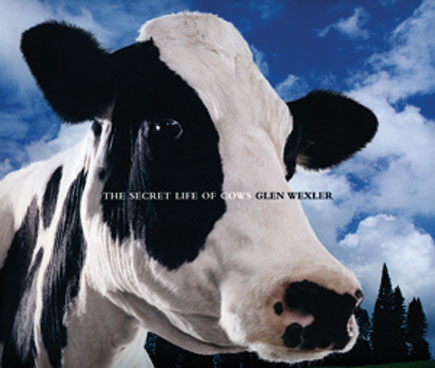 |
Welcome to Oz; by Vincent Versace; New Riders; 224 pages;
$44.99 with CD; (ISBN: 0-7357-1400-2)
Vincent Versace is a Renaissance man who has produced the best how-to book of
the year! With its subtitle of "A Cinematic Approach to Digital Still
Photography with Photoshop" Versace introduces a system for creating images
that owes as much to the traditional darkroom as the digital one. Don't
just read the book; study it. The first chapter isn't called "The
Tao of Dynamic Workflow" for nothing and, like the rest of the book, contains
Versace's charm, wit, and wisdom. It's copiously illustrated with
detailed step-by-step examples of techniques that when applied to your own work
will turn you from zero to hero. The fact that he's a heck of a photographer
means the book is stunningly illustrated, but it's also been well designed.
It has become a cliché to say that a book could change your life, but
this one could.
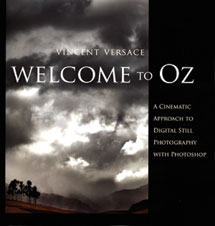 |
How Digital Photography Works, Second Edition; by Ron White,
illustrated by Tim Downs; Que; 240 pages; $29.99; (ISBN: 0-7897-3630-6)
Ron White and illustrator Tim Downs have again collaborated to produce the best
technical book of the year. Containing more than 40 pages (for the same price)
of the impressive first edition, the text and phenomenally detailed illustrations
make this book an indispensable guide for anyone who wants to learn the nuts
and bolts of digital photography. I keep it on my bookshelf as a reference because
it includes details and drawings on everything from optics to the best explanation
of histograms I've read. This may sound like dry stuff but White's
tightly written prose and Downs' illustrations make it fun.
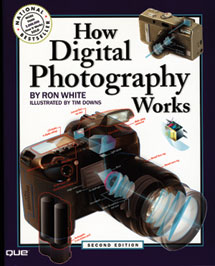 |
Nash Editions: Photography and the Art of Digital Printing;
by Graham Nash et al.; New Riders; 248 pages; $50; (ISBN: 0-321-31630-4)
This is the magnum opus on digital printing and the book to read before color
calibrating your monitor or wondering about differences in pigmented and dye-based
inks. With little in the way of "how-to," the book focuses more
on why and showcases eloquent photographs, including a heartbreakingly beautiful
portrait of Marilyn Monroe, a naked World War II bomber tail gunner, and the
inevitable "Emperor's New Clothes" work. Equally heartbreaking
for far different reasons is Henry Wilhelm's essay "A History of
Permanence" that includes a section called "The Totally Lost Kodacolor
Era" that will leave you stunned by the corporate callousness that's
described. This book not only deserves to be on the bookshelf of anybody who
cares about photography, it deserves to be read.
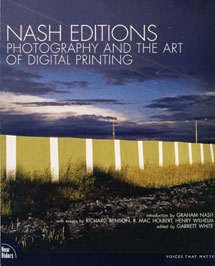 |
Technique
Architectural Photography: The Digital Way; by Gerry Kopelow;
Princeton Architectural Press; 144 pages; $24.95; (ISBN: 1-56898-697-1)
I have often said publishers use the aviary marketing system, treating books
as if they are birds in a cage and marketing them by opening the door saying,
"fly, little birdies fly." Gerry Kopelow didn't wait for his
publisher to forward a copy of his remarkable little book (they didn't)
and sent it himself. Architectural Photography is my choice as sleeper of the
year and this slender
144-page volume is filled with technically and aesthetically pleasing images
in what is an oh-so-difficult to master medium. Kopelow shows you how he handled
a difficult assignment by combining three different shots to beautifully show
a room's interior and exterior. In addition to providing tips and techniques
for capturing real-world buildings during day or night, he includes a section
on photographing models that are an important part of the architect's
world. This compact book provides far more useful information than is found
in other larger tomes on this subject.
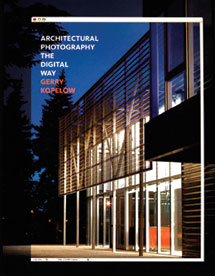 |
Skin; by Lee Varis; Sybex; 432 pages; $39.99 with CD; (ISBN:
0-470-04733-X)
What the photography world needs is more single-focus books like Skin. The book
begins with a superfluous chapter on digital imaging basics and workflow that
I'm guessing the publishers shoved down the author's throat, so
let's thwart their feeble attempt at ruining this great book by skipping
that section and jumping into the important parts showing how dealing with skin
starts before you've even captured one image--with lighting. The
book then takes off like Dario Franchitti, hitting skin color, a really cool
off-course excursion into monochrome, before approaching the finish line with
retouching and tossing in a victory lap of special effects. Great photography,
real-world models, and hands-on tutorials make Skin a minor masterpiece.
 |
- Log in or register to post comments



